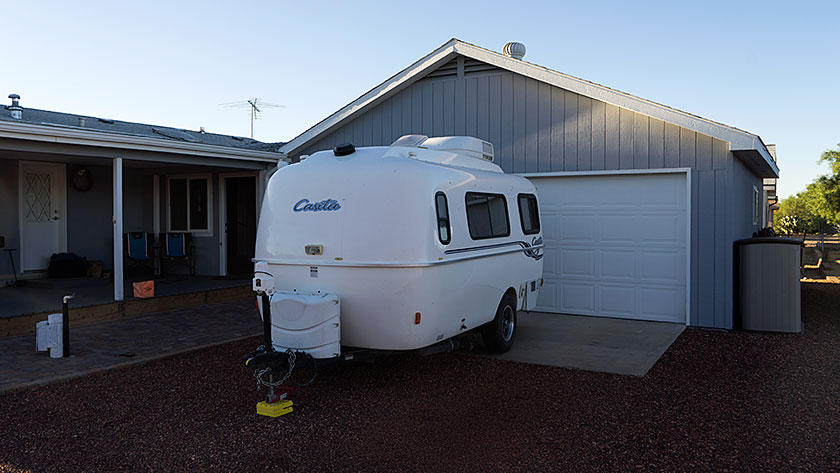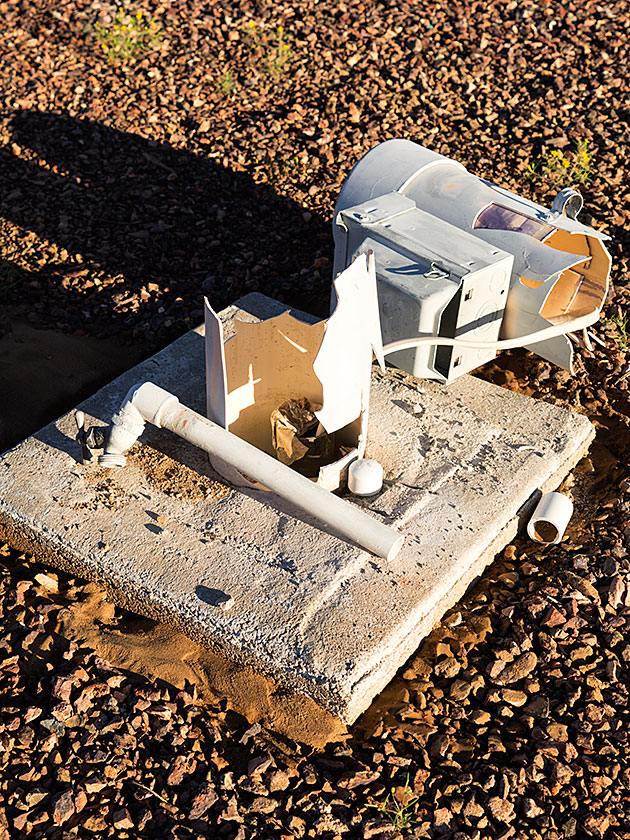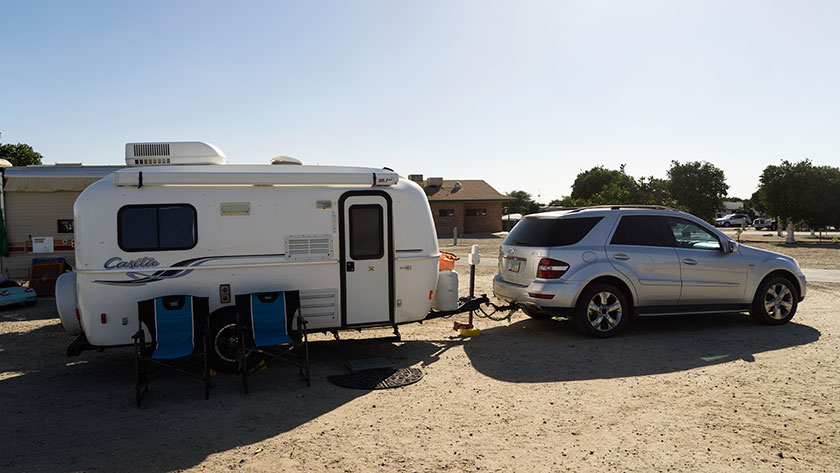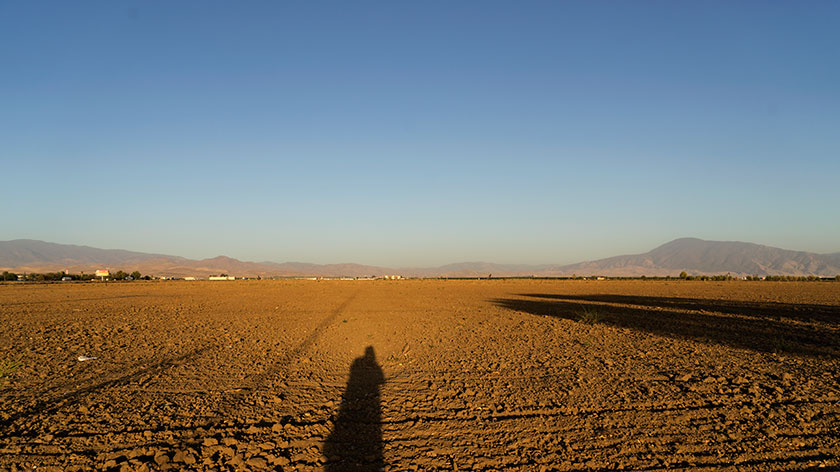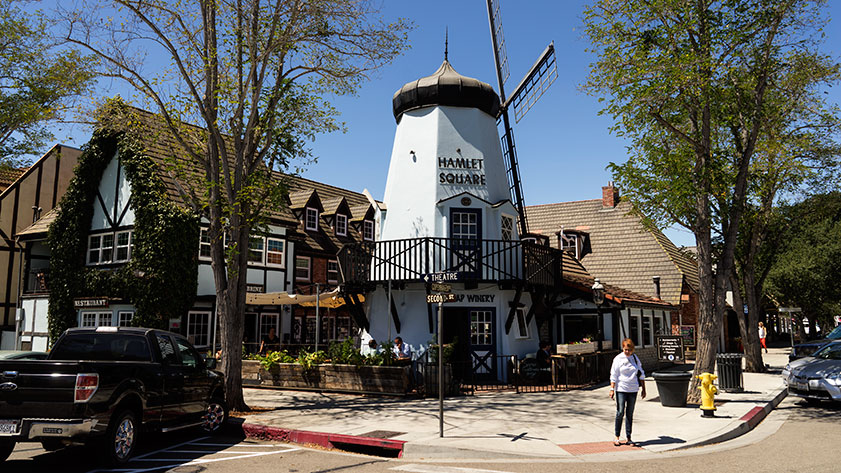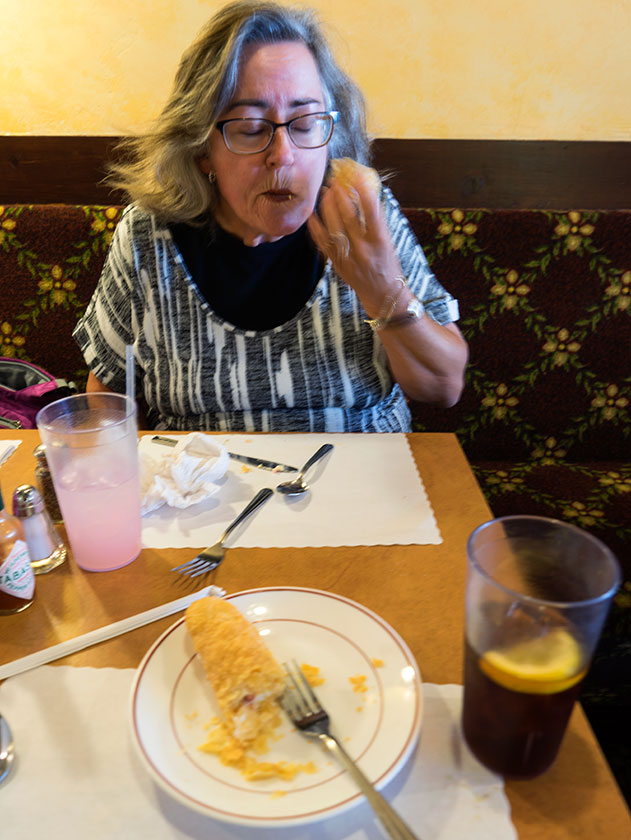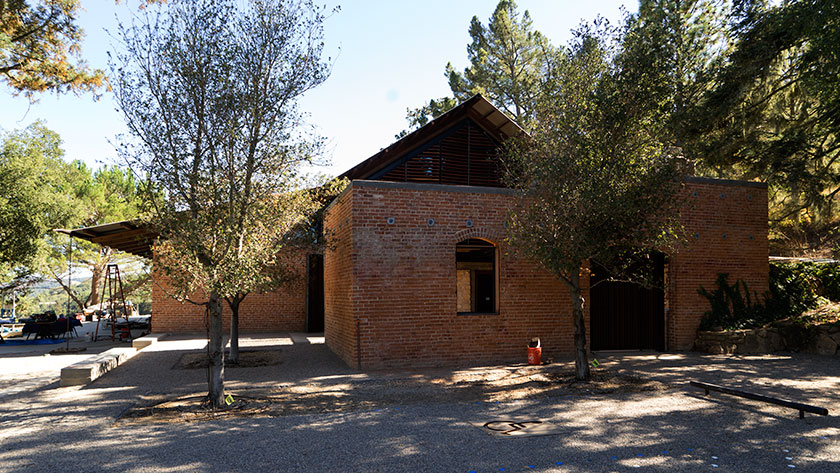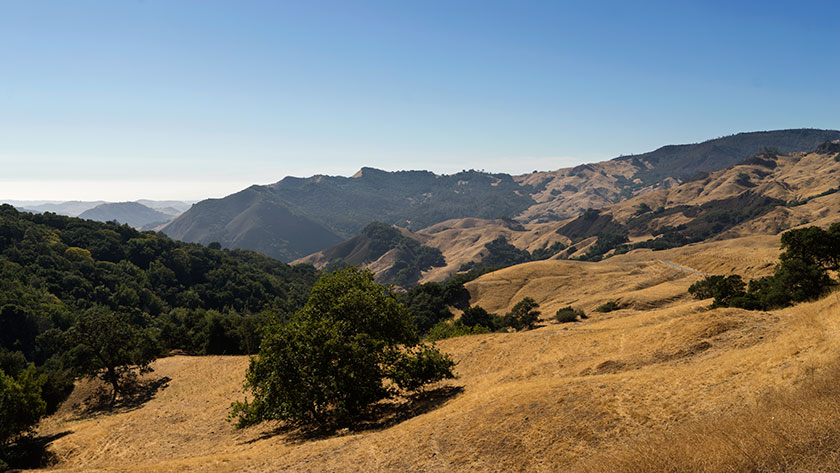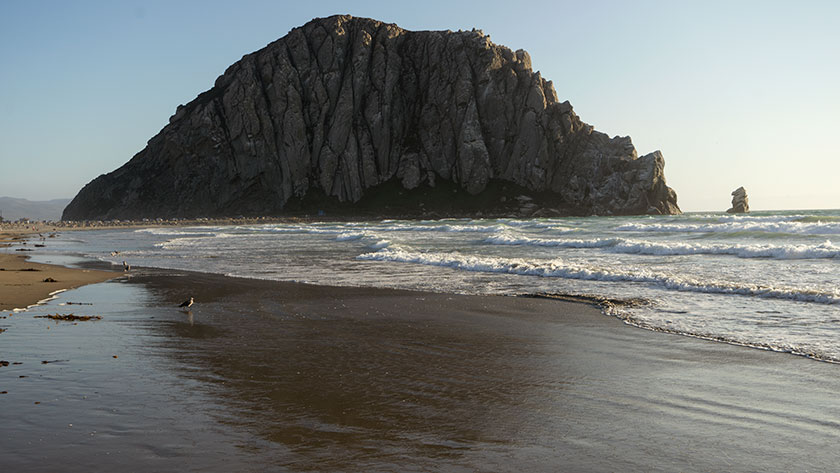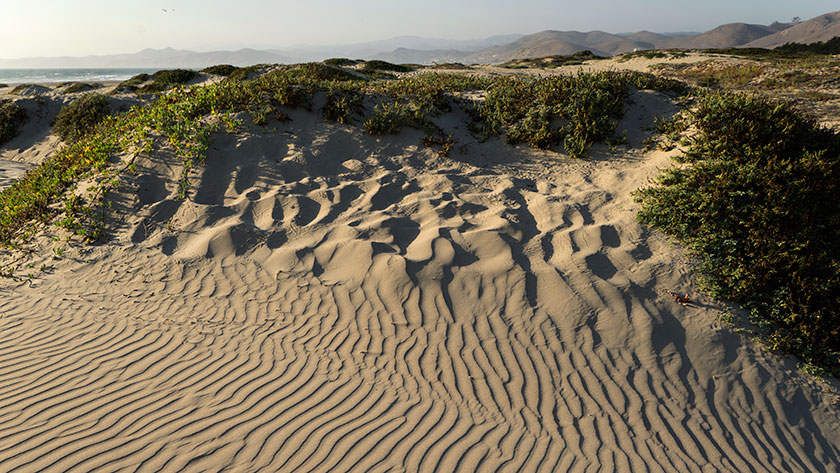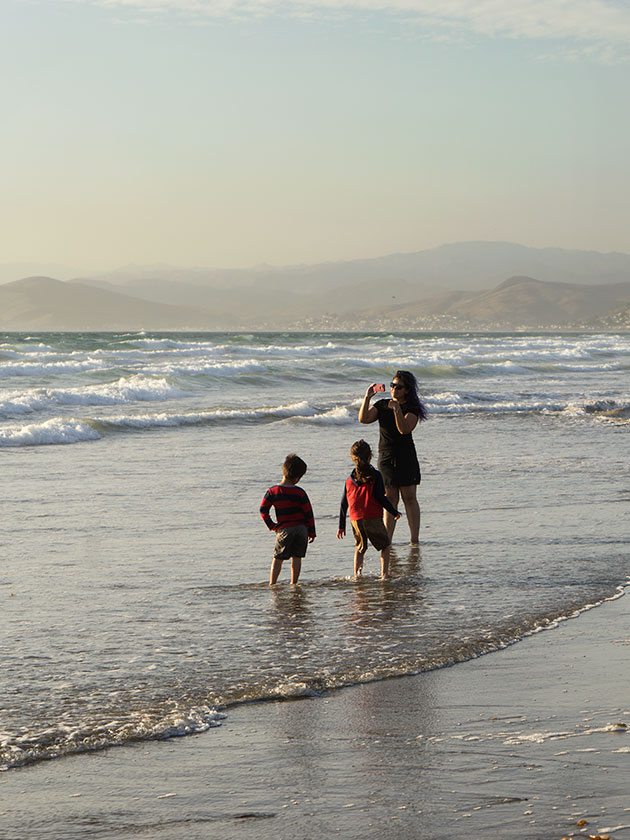Murphy’s Law strikes again (you really didn’t see that coming?), and as a result, my three frames turned into two. I’m generally pleased with how they came out, but as you would expect, there’s room for improvement. It’s that strive for perfection that keeps us going.
In the last post, I had concerns about getting the size right, because I already bought mats and glass cut to 28×20 inches. I could shave a little off of the mats, but not the glass. I wanted them to drop in the ¼ inch rabbet, but not be too sloppy. Figuring out the cut length of each side was straight forward. If you managed to stay awake in high school geometry, you’ll remember that the sides of a rectangle add up to 360°, so the four corners are 90°. The cut angle on the frame ends is half that, or 45°. The geometry teacher also went off on something called The Pythagorean Theorem, you know, the square of the long side of a right triangle is equal to the sum of the squares of the other two sides.
By now I’ve made Queen Anne’s eyes roll into the back of their sockets. Don’t worry, you don’t need to know any of that, nor do you need your calculator with a square root key. Just remember that 45° is the magic number where both short sides of the triangle are equal. Since the width of my frames from the rabbet to the outside edge is exactly ½ inch, I need to add ½ inch to the length . . . at both ends. In my design, the frames outside dimensions are 29×21 inches. Since I wanted them to fit loose, I added another 1/32 inch.
Now that I had all the calculations out-of-the-way it was time to cut some wood. The first thing it did was to set my saw’s miter gauge to . . . 55°, and made two 29 inch cuts. Then I laid them out on the table, and like a dork, I tried for fifteen minutes to figure out why they weren’t square.
After I discovered my mistake, I thought that I could salvage the two cuts by cutting them again for the short side. About my Incra miter gauge; . . . it’s very precise with stops that can be set to 1/10°. I’ve added a Incra fence to it that helps me make repetitive cuts, but it’s kind of thick and its measuring tape pivots in front of the miter gauge, so it needs resetting each time the angle changes. It’s simple enough to do; I just set the stop to 10 inches, cut a piece of scrap wood, measure the actual cut length, and then adjust the tape to match.
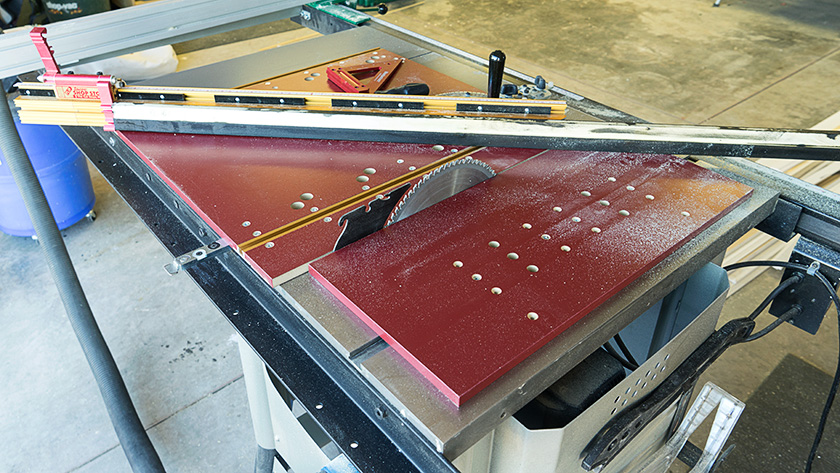
Now, I’m already recovering from one mistake and I’m mentally beating myself up, so I’m not thinking about if I change one thing, how it affects another, and I’m rushing. I set the miter gauge to 45° and double checked it and made sure all the fine adjustments were set to zero. I set the stop to 10 inches, grabbed a piece of scrap off the rack and began my test cut. As the blade goes through the wood, I notice that my brand new Tenryu carbide blade is also cutting off the corner of my Incra aluminum fence. At 55° the fence cleared the blade, it didn’t at 45°. Fortunately, the blade went cleanly through the aluminum without exploding, but I’m sure it took a beating in the process.
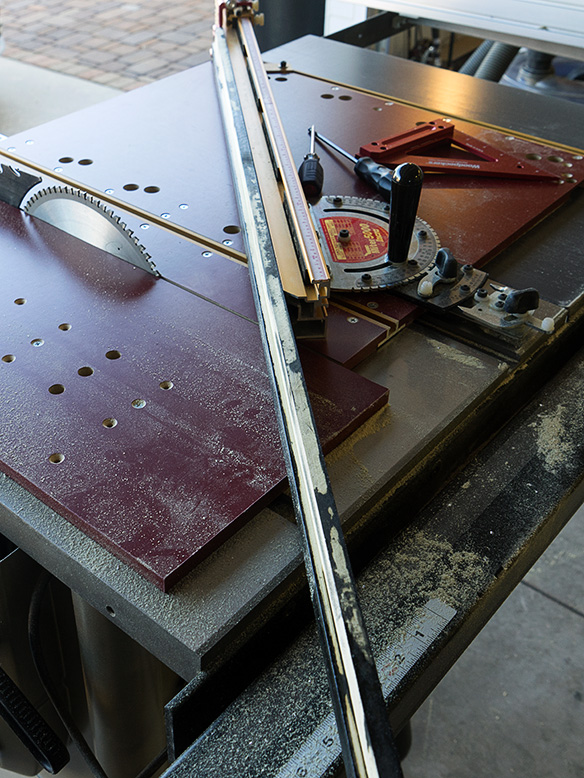
I had to take a moment and step back for a breath and a few well placed words normally spelled with symbol keys. When gathered, I adjusted the fence to clear the saw blade, and cut another piece of scrap. After correcting the tape, I was ready to shorten my first two pieces. I ran the piece through the saw and realized that I held it against the fence backwards. Now it was too short.
Believe it or not, I actually did wind up cutting the rest of the pieces correctly. Once I had everything set it was easy. I just had to focus. And with the fence stop, I could take a cut off a longer piece, by cutting the first miter, flip it over and cut the other side. They came out perfect. As I said, I wound up with enough for two frames and some pieces I can eventually use for smaller frames.
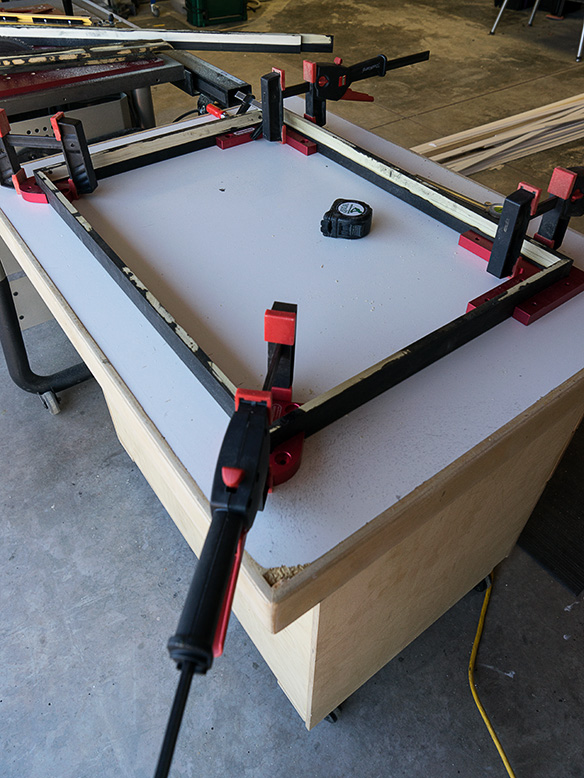
The next step was to glue the four sides together. I have some aluminum jigs to hold the corners together at right angles. They work really well except they don’t exert any lateral pressure to the joints. The glue has to set up without pressure. End grain joints are not very strong, so I planned on making a spline joint after they dried. That would be strong enough to hold the glass.
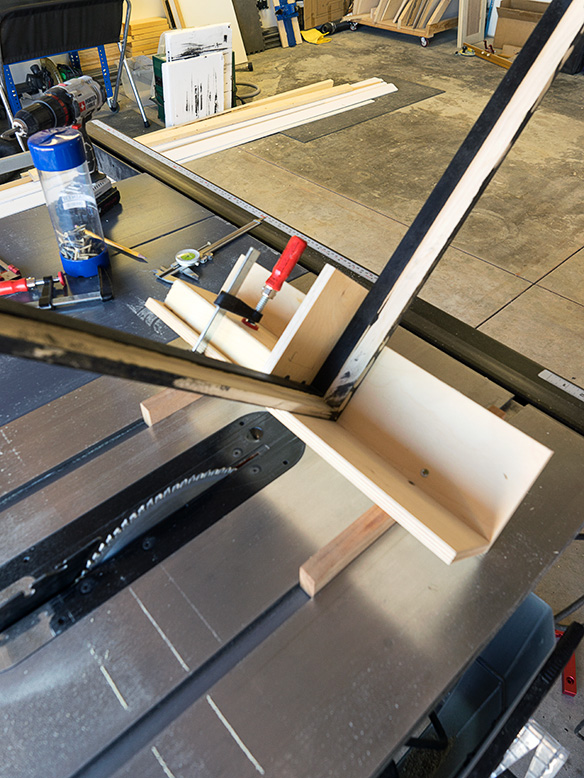
After getting a table saw a couple of years ago, the first jig I made was one for cutting spline slots in frames. It’s simply two pieces of plywood attached to a couple of mesquite runners. It holds a frame (or box) at an angle so you can run it through a saw. Then you cut wood in 1/8th inch slices and glue them into the open slot. After they dry, you trim off the excess, sand and finish. Since this was the first time I used it, I set the depth of the saw blade too deep. It needs to be less than the thickness of the wood piece you’re slicing. I was using standard one by (4×4), so I shouldn’t go any deeper than 5/8 inch into the frame.
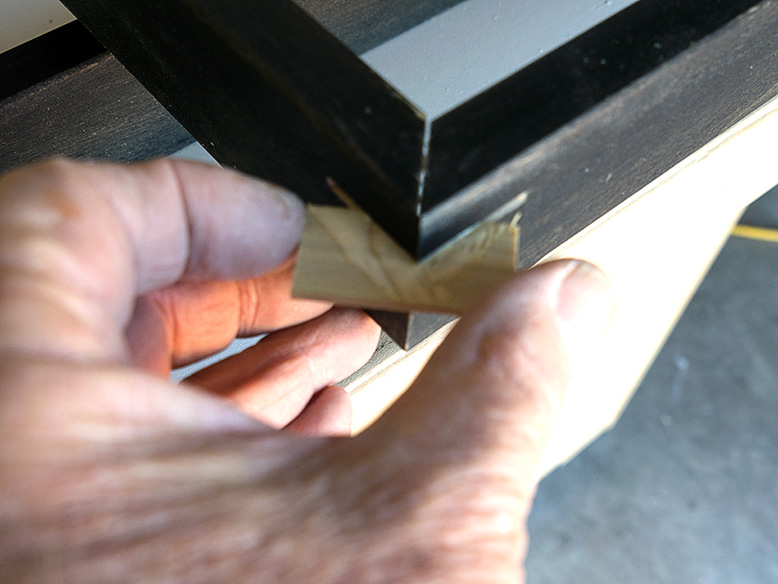
Finally there’s the finishing fiasco. I wanted to have my frames ready for the Museum Show last week, so I used materials on hand. I wanted a black stain with a clear top coat. The local hardware only had oil based stains on hand and I use normally use a water based finish coat, so mixing the two isn’t possible. I decided I could spray some shellac and lacquer for the last finish and bought a couple of cans of both. When I put a coat of shellac over the black stain as a sanding sealer, it looked good . . . until I started sanding it. The sandpaper took off the shellac and most of the black stain. It looked retched.
I didn’t have water-borne black stain, but I did have a very dark brown. I mixed it with the acrylic sanding sealer in a one to one mix and brushed it on the frames. After it dried, I tried sanding it, and even that quickly got down to the base wood. The stain hadn’t penetrated the poplar enough to keep the color during sanding. As a last resort, I applied two coats of the colored sanding sealer letting the frames dry after each coat.
On close inspection, they look awful, but are good enough at a distance. Fortunately they weren’t lit up with a hot spotlight at the show, so they looked good in the dark. After the show, we hung the framed prints in the bedroom where they look just fine.
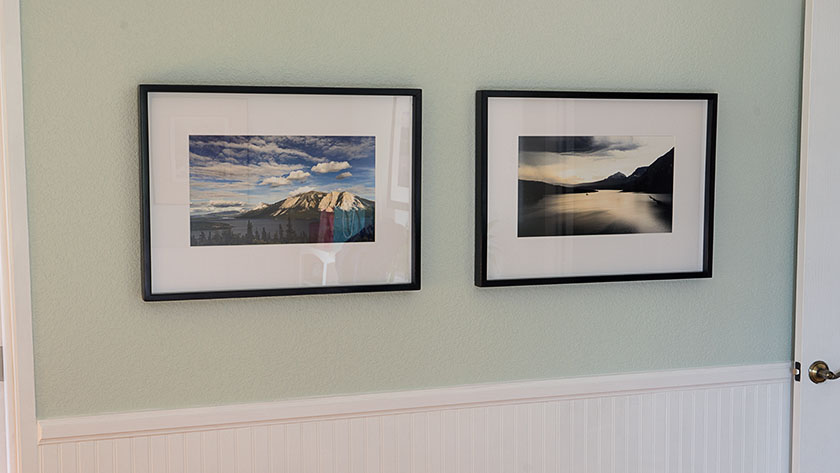
I’m going to try another type of wood on my next frames. I’m thinking about birch or alder. They’re in the price range of poplar and neither of the former has the green streaks of the latter. I’m leaning towards the birch, because I understand it’s easier to work with than the maple I’ve worked with in the past.
I’ll keep you posted as I learn more.
Till then – jw


